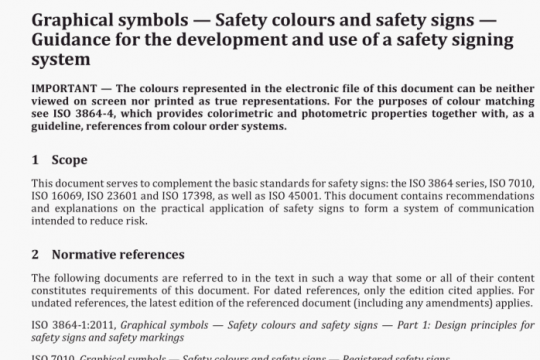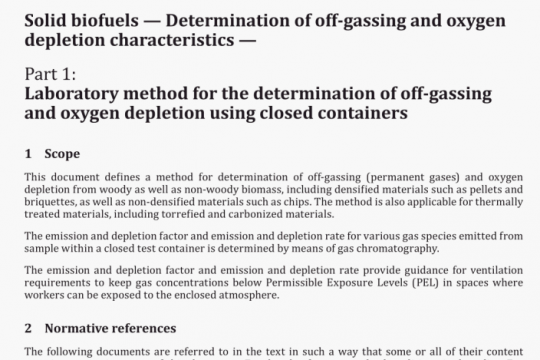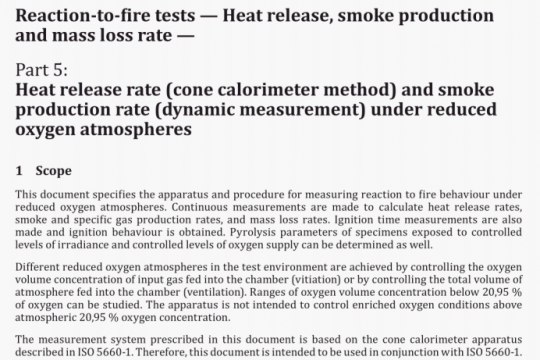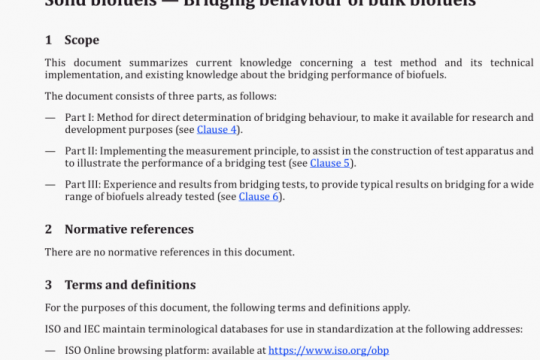ISO 10303-1 pdf free download
ISO 10303-1-2021 pdf free download.Industrial automation systems and integration一Product data representation and exchange- Part 1: Overview and fundamental principles.
4.1 Purpose
The purpose of ISO 10303 is to specify a form for the unambiguous representation and exchange of computer-interpretable product data throughout the life of a product. This form is independent of any specific computer system. This form enables consistent implementations across multiple applications and systems. ISO 10303 permits different implementation methods to be used for storing, accessing, transferring, and archiving product data. ISO 10303 defines a rigorous process for testing implementations for conformance.
4.2 Scope ofISO 10303
ISO 10303 provides a representation of product information along with the necessary mechanisms and definitions to enable product data to be exchanged. The exchange is among different computer systems and environments associated with the complete product lifecycle, including product design, manufacture, use, maintenance, and final disposition.
The following are within the scope of ISO 10303:
— representation of product information, including components and assemblies;
— implementations methods for exchange of product data, including storing, transferring, accessing, and archiving.
4.3 Fundamental principles
4.3.1 General
ISO 10303 separates the techniques ofrepresentation ofproduct information from the implementation methods used for data exchange.
The representation techniques provide a single representation ofproduct information common to many applications. This common representation may be adapted to meet the needs of specific applications. An application protocol (AP) specifies the representation of product information for one or more applications.
ISO 10303 specifies the implementation methods that support the exchange of product data defined in APs.
ISO 10303 defines a formal data specification language, EXPRESS which is used to specify the representation of product information. The use of a formal language provides unambiguous and consistent representation and facilitates development of implementations. The representation of product information may be annotated with a literal definition for each construct.
ISO 10303 provides a methodology and framework for conformance testing of implementations.
4.3.2 Integrated resources
A set of integrated resources (IRs) shall provide the specification of a representation of product information. Each IR comprises a set of descriptions, written in a formal data specification language,applicable to product data known as resource constructs. One set may be dependent on other sets for its definition. A single resource construct may represent similar information for different applications.
The IRs in ISO 10303 are divided into two groups: generic resources and application resources. The generic resources are independent of applications and may reference other resources. The application resources may reference other resources and may add other resource constructs for use by a group of similar applications. The IRs may reference product data descriptions written using EXPRESS from other International Standards.
4.3.3 Support for applications
The IRs define a generic information model for product information. They are not sufficient to support the information requirements ofan application without the addition ofapplication specific constraints, relationships, and attributes.
ISO 10303 defines APs in which the IRs are interpreted to meet the product information requirements of specific applications. The interpretation is achieved by selecting appropriate resource constructs and refining their meaning, by specifying any appropriate constraints, relationships, and attributes. This interpretation results in an application interpreted model (AIM). The AIM is documented as part of an AP.
ISO 10303 has two mechanisms to ensure consistent interpretation when a resource construct represents the same information requirement in different APs. One mechanism uses interpreted resource constructs appearing in more than one AP as a documented application interpreted construct (AIC). The other mechanism uses application modules (AMs) that document the harmonized requirements along with the interpreted resource constructs.
NOTE Subclauses 6.4 and discuss application interpreted constructs and application modules in more detail.
The scope and information requirements of the application are specified using the terminology of the application domain. The AP provides a mapping to show how the interpretation of the IRs is used to meet the information requirements of the application domain.
ISO 10303 provides business object models that present complex models in a form that may be more understandable to application experts.
4.3.4 Implementation methods
Each implementation method included in ISO 10303 is specified by a mapping from the EXPRESS language onto the formal language used for the method. The mapping is independent of the AR The mapping is expressed in a formal notation. At least three implementation methods for 150 10303 have been identified (see 6.3.4).
4.3.5 Implementations
An AP may specify one or more applicable implementation methods from the set of implementation methods in ISO 10303. An implementation shall apply one or more of the implementation methods specified in the AP to the AIM.
4.3.6 Conformance testing
Conformance of an implementation to an AP is specified by the conformance requirements in the AR
A set of tests, specified in an abstract test suite (ATS), may be defined for each AP. When associated with an abstract test method (ATM), these tests can be used to assess the conformance ofan implementation. The overall framework for conformance assessment is specified in ISO 10303-31.
An ATM for each implementation method is specified in one of the conformance testing methodology and framework series of parts of ISO 10303.ISO 10303-1 pdf download.




